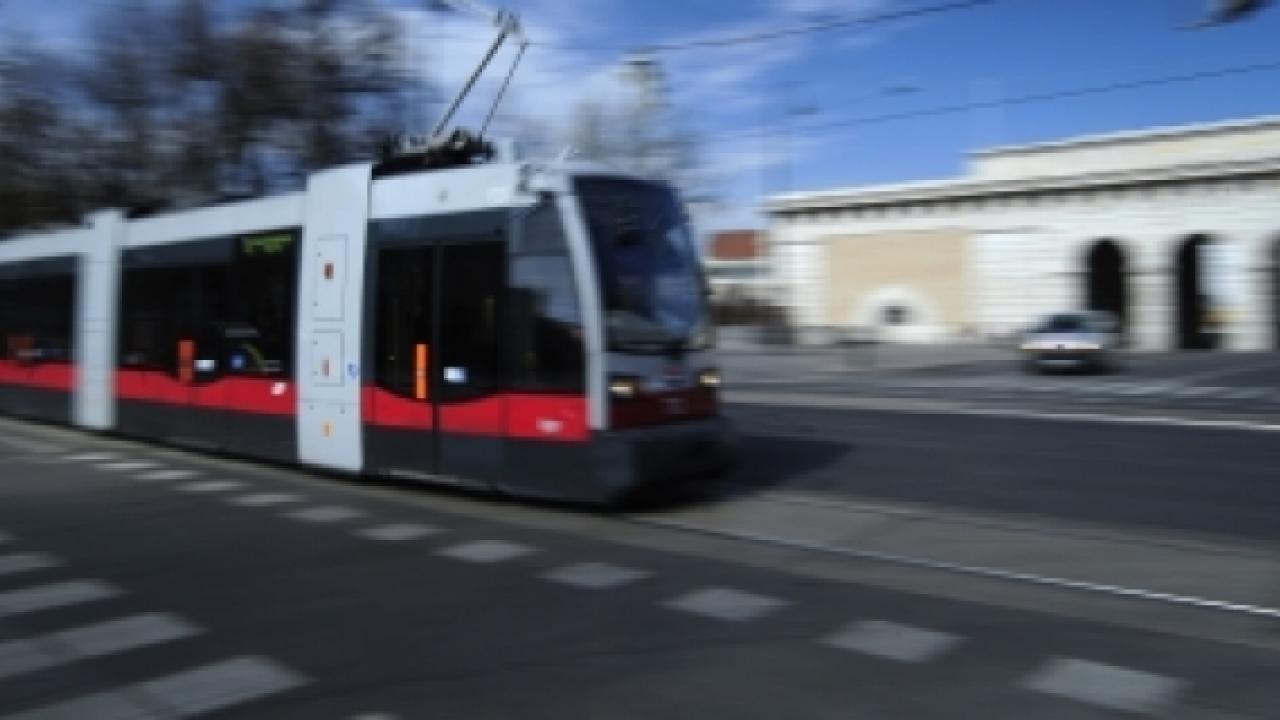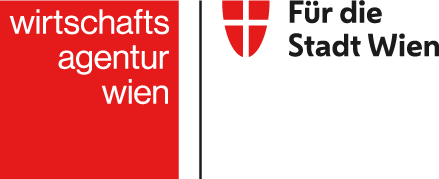Sightseeing by tram – get on board, please!
All you got to do is pay the tiny fee of 2,20 Euro, hop on Line 1, change for Line 2 at a certain point and enjoy the beautiful buildings at the Viennese „Ring‟. A cheaper and more authentic city tour simply doesn’t exist. If you don’t want to diclaim explainations about the points of interest you should probably use the Vienne Ring Tram. The ride on this Tram takes around 25 minutes and costs 7,– Euro (a ticket for 24 hours with the possibility to hop on and off costs 9,– Euro), headsets and screens with loads of information in the language of your choice are included. Foto
The appearance of the Ringstraße
It was the idea of Emperor Franz Joseph to connect the outer districts with the inner city. Therefore he decided in 1857 to let the defensive walls and the glacis disappear and create a building area instead. He initialized an architecture competition in order to generate ideas for the redesign of the area. The Emperor wasn’t convinced by any of the proposals but the direction was clear: Generosity and grandiosity. For the upper classes should get room to present themselves. And so they did. In 1858 they startet to break down the bastion and to the regret of many also the leafy glacis was ruined. But the result was quite good: Today the Ringstrasse is one of the largest (57 meters wide and 4 kilometers long) and most beautiful avenues worldwide.
Franz-Josefs-Kai
Let’s get on board at Schwedenplatz, take a seat at the window and in travel direction which will be counterclockwise if you don’t mind – and here we go! What we leave behind is one of the most important traffic hubs of the city. 1919 it got the name Schwedenplatz to thank the Swedes for their help after the First Worldwar. What we also leave behind: some superb ice-cram parlours and the Bermudadreieck (right behind the Schwedenplatz) which is a popular pub district that does exist since the 1980s. Some people disappear there for a whole weekend – that’s what the name Bermuda Triangle is supposed to mean.
Schottenring
The begin of the Schottenring is marked by the Ringturm (Ring tower), an office tower which has 23 levels and doesn’t look quite impressive at a first glance. But at the time it was built (1953–1955) it was one of the highest buildings in Europe and definitely something special. The Ringturm still is a symbol for the reconstruction of the city after the war.
On the left side you soon after see a building made of red bricks, the alte Börse (former stock exchange building). The building was created by architect Theophil Hansen and realized in 1877. Since the stock exchange moved to Wallnerstrasse the gorgeous halls of alte Börse are setting for concerts, conferences and symposia. If you are kind of an eagle eye you could catch a glimpse of the Votivkirche (Votiv church). This church was built out of gratitude after a failed assassination of Emperor Franz Joseph and is often confused with the St. Stephan’s Cathedral by tourists. The so called „Ring Cathedral‟ is a fantastic example of historism and worth to get off the tram and head to Roosevelt Square, where it is located. Cause a few meters farther the University of Vienna covers everything that lies behind.
Universitätsring
The name of this section of the Ring is quite new. Earlier it’s name was „Dr.-Karl-Lueger-Ring‟ – and oftentimes it’s still called that. The university urged the renaming for they didn’t want to have the name of the „founder of the modern antisemitism‟ in their adress. And in the end they succeeded.
Well … next stop: Uni Wien – the Tramway will clear here. The building was openend by Emperor Franz Joseph 1884 (the institution existed since 1365!) and has a ground area that is 161 meter long and 131 meters wide. Corresponding to the historism you find everywhere at the Ringstrasse it is designed in the style of the Rennaisance. You certainly can enter the time-honored building. Well worth seeing is the arcaded sidewalk in the courtyard with many busts of successful and famous alumni.
As we go on it’s getting a little bit difficult because the Rathaus with Rathausplatz (city hall with it’s square) appears on the right, and on the direct opposite the Burgtheater. The city hall arises in a neo-gothic style and was created between 1872 and 1883 and houses the office of mayor Michael Häupl. Since 1993 the halls of the superb building are the setting of the most extraordinary ball in the world: the Lifeball. You will have heard about the fanatastic event that celebrates queer, gay, lesbian and straight lust for life, 2013 under the motto „Arabian Nights‟.
But what about the Burgtheater? Did we already pass by? Anyway … the building on the left is the „Burg‟ how the Viennese call it. The theater at the Ringstrasse is in use since 1888, the history of the house is dating back to 1741. Emperor Joseph II., son of Maria Theresia, was an enthusiastic supporter of the theater. He had his very own loge and he prescribed the „Viennese Ending‟ – an early definition of happy ending – for all plays. The Burgtheater is the biggest and at the same time one of the most important German-language theaters.
Dr.-Karl-Renner-Ring
The eycatching building in greek style is the parliament – domicile the of the National and the Federal Council. It was constructed betwen 1873–1883 after the plans of Theophil Hansen. At the pediment of the house the 14 former Austrian crown-lands are allegorized. At the roof itself some important men have their meeting, for example Socrates, Plutarch and Platon. In front of the parliament you will see a four meter high statue of Pallas Athene, designed by Carl Kundmann. Athene is turning her back on the parliament. This fact lead to rumours that the wisdom is not necessarily native inside the parliament. At the right side of the building you find a bust of Dr. Karl Renner. He was president of Austria between 1945 and 1950 and gave the name to this section of the Ring.
Burgring
The two buildings on your right side, that look almost identical, are called Naturhistorisches Museum (museum of natural history) and Kunsthistorisches Museum (museum of art history) – two of the most important museums of Vienna. The fact that the two buildings reflect one another should symbolize that art and nature are of completely equal value. The NHM was opened in 1889, the KHM followed in the year 1891. It would definitely be a good idea to get off the tram and visit one of the museums, at least to see the buildings if you are not interested in the exhibitions.
Vis á vis the museums you can see the gate leading to Heldenplatz („hero’s square‟) and the Hofburg. From here the Habsburgs reigned their empire for over 700 years. The Hofburg originally was a castel dating back to the 14. century. The Habsburgs are responsible for it’s actual huge dimensions. Today it is still the representative center of Vienna – the Austrian president Heinz Fischer works here. Furthermore the national library and some art collections are situated here. The ones who need a break on the open air could get off here and head to the Burggarten behind the fence on the left side. Don’t miss the Palmenhaus (palm tree house), a typical Jugendstil building made of glass of special interest for architecture enthusiasts.
Opernring
Ready to continue? Well, there are some other posh huts we want to show you. For example the Wiener Staatsoper (Vienna State Opera) turning up at the left side. The opera was one of the first prestigeous buildings at the Ring and constructed between 1863 and 1869. Today it offers a profile of the opera literature and if you follow a guided tour you can even look behind the stage. Once a year the opera turns into an amazing ball hall and presents the Opernball – probably the most luxurious event in town.
Next stop: Kärntner Ring / Oper. Please change Tram here, if you still haven’t enough of our sightseeing tour. Change to line 2 and get to see the complete Ringstrasse.
Kärtner Ring until Parkring
The Kärtner Ring is appearing especially posh. Here are the Ringstrassengalerien with a lot of exclusive shops for exclusive people. One of the most outstanding buildings is Hotel Imperial. Originally it was built (1862–1865) as a Palais for duke Philipp of Wurttemberg, he lived here with archduchess Marie Therese of Austria – and yes, this lad had money. Soon the building was sold and transformed into a hotel. 1873 the splendid house was opened on the occasion of the World Exhibition in 1873 in the presence of Emperor Franz Joseph and Empress Elizabeth. One thing you can belive: The inside is even more glamourous than the outside.
The representative Schubertring comes up with more beautiful shops. Parkring is named after the Stadtpark (city park) which is located on your right. Viennas first public park was opened in 1862 and if you want to stroll around – why not doing it here: No park has more sculptures than the Stadtpark. The park is nice any time of the year because the gardeners cared for a year-round blooming.
Stubenring
Directly at the end of the Stadtpark, on the right hand, the MAK (museum for applied arts) appears. It is located in a building created by Heinrich von Ferstl that is illuminated at night in a very beautiful almost magic way. The MAK sees itself as a melting point of applied art, design, architecture and contemporary art. The Schausammlung (permanent collection) presents selected highlights in chronologic order. The Studiensammlung (study collection) and variable exhibitions are giving concrete insight in special topics.
In the turn that leads to the Franz-Josefs-Kai the Urania is situated. It was founded in 1897 as an institute for national education and it is still important for adult education. Besides it houses a punch and judy theater and an observatory.
Next stop Schwedenplatz …
… please get off the train. At least you have to get off if you want to stay in the inner city after our Ring tour. If you prefer to have a relaxing coffee after all the sightseeing you can stay seated, beacuse line 2 is heading to the 2. district. At the Karmeliterplatz you find the Karmelitermarkt with all its nice cafés. If you prefer to go for a walk you maybe want to get off at Taborstrasse and enter the Augarten, a beautiful park where you can stroll around for hours in the urban nature.


